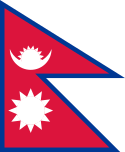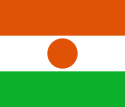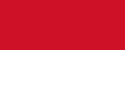Lista państw świata według wskaźnika rozwoju społecznego
Lista państw świata według wskaźnika rozwoju społecznego – lista tworzona na podstawie Human Development Report, publikowanego przez Program Narodów Zjednoczonych ds. Rozwoju. Lista z roku 2010 obejmuje 169 państw: 168 członków ONZ oraz Hongkong. 24 państwa członkowskie ONZ nie zostały na niej uwzględnione, ponieważ nie dostarczyły odpowiednich danych. Lista zawiera także średnie wskaźniki rozwoju społecznego regionów świata oraz organizacji międzynarodowych.
Do obliczenia syntetycznego miernika WRS wykorzystane zostały następujące dane: średnia oczekiwana długość życia, analfabetyzm, poziom edukacji oraz standard życia w państwach, w skali światowej. W rankingu zawarte zostały także informacje na temat jakości życia, szczególnie dzieci. Wiadomości te pozwalają określić stopień rozwinięcia kraju (wysoko, średnio lub nisko), a także wpływ polityki ekonomicznej na jakość życia. Wskaźnik stworzył w 1990 roku pakistański ekonomista Mahbub ul Haq[3].
W raporcie państwa osadzone zostały w czterech kategoriach: państwa bardzo wysoko rozwinięte, państwa wysoko rozwinięte, państwa średnio rozwinięte oraz państwa słabo rozwinięte.
Lista państw świata według wskaźnika rozwoju społecznego
Kraje bardzo wysoko rozwinięte
|
| ||||||||||||||||||||||||||||||||||||||||||||||||||||||||||||||||||||||||||||||||||||||||||||||||||||||||||||||||||||||||||||||||||||||||||||||||||||||||||||||||||||||||||||||||||||||||||||||||||||||||||||||||||||||||||||||||||||||||||||||||||||||||||||||||||||||||||||||||||
Kraje wysoko rozwinięte
|
| |||||||||||||||||||||||||||||||||||||||||||||||||||||||||||||||||||||||||||||||||||||||||||||||||||||||||||||||||||||||||||||||||||||||||||||||||||||||||||||||||||||||||||||||||||||||||||||||||||||||||||||||||||||||||||||||||||||||||||||||||||||||||||||||||||||||||||||||||||||||||||||||||||||||||||
Kraje średnio rozwinięte
|
| ||||||||||||||||||||||||||||||||||||||||||||||||||||||||||||||||||||||||||||||||||||||||||||||||||||||||||||||||||||||||||||||||||||||||||||||||||||||||||||||||||||||||||||||||||||||||||||||||||||||||||||||||||||||||||||||||
Kraje słabo rozwinięte
|
| ||||||||||||||||||||||||||||||||||||||||||||||||||||||||||||||||||||||||||||||||||||||||||||||||||||||||||||||||||||||||||||||||||||||||||||||||||||||||||||||||||||||||||||||||||||||||||||||||||||||||||||||||||||||||||||||||
Kraje, których nie ma w najnowszym raporcie
Państwa będące w ONZ
| Państwa lub terytoria, których nie ma w ONZ
| |||||||||||||||||||||||||||||||||||||||||||||||||||||||||||||||||||||||||||||||||||||||||||||||||||||||||||||||||||||||||||||||||||||||||||||||||||||||||||||||||||||||
WRS w grupach państw
| |||||||||||||||||||||||||||||||||||||||||||||||||||||||||||||||||||||
Lista państw według kontynentów
Afryka
10 najwyższych WRS
| 10 najniższych WRS
| |||||||||||||||||||||||||||||||||||||||||||||||||||||||||||||||||||||||||||||||||||
Ameryka Północna i Południowa
10 najwyższych WRS
| 10 najniższych WRS
| |||||||||||||||||||||||||||||||||||||||||||||||||||||||||||||||||||||||||||||||||||||||||||
Azja i Oceania
10 najwyższych WRS
| 10 najniższych WRS
| |||||||||||||||||||||||||||||||||||||||||||||||||||||||||||||||||||||||||||||||||||
Europa
10 najwyższych WRS
| 10 najniższych WRS
| |||||||||||||||||||||||||||||||||||||||||||||||||||||||||||||||||||||||||||||||||||
Lista państw według regionów
Kraje arabskie
10 najwyższych WRS
| 10 najniższych WRS
| |||||||||||||||||||||||||||||||||||||||||||||||||||||||||||||||||||||||||||||||||||||||
Unia Europejska
10 najwyższych WRS
| 10 najniższych WRS
| |||||||||||||||||||||||||||||||||||||||||||||||||||||||||||||||||||||||||||||||||||
Azja Wschodnia i Pacyfik
10 najwyższych WRS
| 10 najniższych WRS
| ||||||||||||||||||||||||||||||||||||||||||||||||||||||||||||||||||||||||||||||||||||||
Ameryka Łacińska
10 najwyższych WRS
| 10 najniższych WRS
| ||||||||||||||||||||||||||||||||||||||||||||||||||||||||||||||||||||||||||||||||||||||||
Bliski Wschód i Afryka Północna
10 najwyższych WRS
| 10 najniższych WRS
| ||||||||||||||||||||||||||||||||||||||||||||||||||||||||||||||||||||||||||||||||||||||||||||||
Raport z 2005
Wskaźnik Rozwoju Społecznego 2005 obejmuje 177 państw: 175 członków ONZ oraz Hongkong i Autonomię Palestyńską. Większość danych w raporcie 2005 pochodzi z 2003 r. Nie wszystkie państwa dostarczyły odpowiednich danych, dlatego w rankingu zabrakło 16 państw członkowskich ONZ, m.in. Afganistanu, Andory, Iraku, Korei Północnej, Liechtensteinu, Monako, Serbii i Czarnogóry, Somalii.
Spośród 32 państw słabo rozwiniętych, 30 leży w Afryce.
Państwa wysoko rozwinięte (WRS powyżej 0,800)
(w nawiasie podano zmianę miejsca w rankingu w stosunku do 2004 roku)
| 1. | 20. | 39. |
| 2. | 21. | 40. |
| 3. | 22. | 41. |
| 4. | 23. | 42. |
| 5. | 24. | 43. |
| 6. | 25. | 44. |
| 7. | 26. | 45. |
| 8. | 27. | 46. |
| 9. | 28. | 47. |
| 10. | 29. | 48. |
| 11. | 30. | 49. |
| 12. | 31. | 50. |
| 13. | 32. | 51. |
| 14. | 33. | 52. |
| 15. | 34. | 53. |
| 16. | 35. | 54. |
| 17. | 36. | 55. |
| 18. | 37. | 56. |
| 19. | 38. | 57. |
Państwa średnio rozwinięte (WRS między 0,500 a 0,800)
Państwa słabo rozwinięte (WRS poniżej 0,500)
| 146. | 157. | 168. |
| 147. | 158. | 169. |
| 148. | 159. | 170. |
| 149. | 160. | 171. |
| 150. | 161. | 172. |
| 151. | 162. | 173. |
| 152. | 163. | 174. |
| 153. | 164. | 175. |
| 154. | 165. | 176. |
| 155. | 166. | 177. |
| 156. | 167. |
Pierwsza i ostatnia trójka według kontynentów
(w nawiasie podano zmianę miejsca w rankingu w stosunku do 2004 roku)
| Afryka 51. | Azja 11. | Europa 1. |
| Oceania 3. | Ameryka Południowa 34. | Ameryka Północna 5. |
Zobacz też
Bibliografia
- Human Development Report 2010 (dane z 2010 roku). (ang.).
- Human Development Report 2009 (dane z 2007 roku). (ang.).
- Human Development Report 2005 (dane z 2003 roku). (ang.).
Linki zewnętrzne
Przypisy
- ↑ a b Statystyki
- ↑ Human Development Data (1990-2015) | Human Development Reports, hdr.undp.org [dostęp 2017-11-25] (ang.).
- ↑ O Human Development Report. hdr.undp.org. [zarchiwizowane z tego adresu (2012-05-15)].. Program Narodów Zjednoczonych ds. Rozwoju (2006).
- ↑ a b c d e f g h i j k l m n o p q r s t u v w x y z aa ab ac ad ae af ag ah ai Human Development Index (2015) and its components. [dostęp 2015-06-25]. [zarchiwizowane z tego adresu (2015-11-20)].
- ↑ United Nations Development Programme The State of Human Development
- ↑ Somalię ujęto ostatni raz w HDR z 1996r. (dane z 1993r.)
- ↑ Ponieważ ONZ nie uznaje Republiki Chińskiej (Tajwanu) za niepodległe państwo, raport WRS nie zawiera danych dla Tajwanu. Rząd Tajwanu obliczył WRS w 2004 roku, na podstawie poniższych danych: średnia długość życia – 77,5 lat; umiejętność pisania i czytania – 97,2%; wskaźnik skolaryzacji brutto dla wszystkich poziomów nauczania – 99%; produkt krajowy brutto (PKB) – 26,241$. Wyniosło ono 0.925. Gdyby Tajwan wliczany był do ONZ-towskiego WRS 2004, figurowałby na 24. miejscu (pomiędzy Izraelem a Grecją).
- ↑ Puerto Rico
- ↑ a b c d e f Les défis de la croissance calédonienne, strona 13.. [dostęp 2011-01-30]. [zarchiwizowane z tego adresu (2008-12-18)].
- ↑ Greenland
- ↑ Rząd Makau sam liczy swoje WRS. Gdyby Makau znalazło się na liście, zajęłoby 23. lub 24. miejsce. Makau
- ↑ L’Indice de Développement Humain : Une Évaluation pour la réunion. [dostęp 2011-01-30]. [zarchiwizowane z tego adresu (2008-12-18)].
- ↑ Human Development Report 2009 – Overcoming barriers: Human mobility and development
- ↑ Human Development Report - Kosovo 2004. [dostęp 2011-01-30]. [zarchiwizowane z tego adresu (2011-07-24)].
Media użyte na tej stronie
Icon representing steadiness, consisting of a blue rectangle. To be used in Template:Steady.
Keep it 300 x 300, do not resize it. Because that may cause some problem when using it, when it is the only element in a text line, the position of the these text lines may go wrong.
Icon representing an increase, consisting of a green-colored, up-pointing triangle.
Icon representing a decrease, consisting of a red-colored, down-pointing triangle.
Flag of Canada introduced in 1965, using Pantone colors. This design replaced the Canadian Red Ensign design.
The flag of Navassa Island is simply the United States flag. It does not have a "local" flag or "unofficial" flag; it is an uninhabited island. The version with a profile view was based on Flags of the World and as a fictional design has no status warranting a place on any Wiki. It was made up by a random person with no connection to the island, it has never flown on the island, and it has never received any sort of recognition or validation by any authority. The person quoted on that page has no authority to bestow a flag, "unofficial" or otherwise, on the island.
Flag of New Zealand. Specification: http://www.mch.govt.nz/nzflag/description.html , quoting New Zealand Gazette, 27 June 1902.
Flag of Liechtenstein
Flag of Israel. Shows a Magen David (“Shield of David”) between two stripes. The Shield of David is a traditional Jewish symbol. The stripes symbolize a Jewish prayer shawl (tallit).
Flaga Finlandii
Autor: Pedro A. Gracia Fajardo, escudo de Manual de Imagen Institucional de la Administración General del Estado, Licencja: CC0
Flaga Hiszpanii
Łatwo można dodać ramkę naokoło tej grafiki
Flag of Portugal, created by Columbano Bordalo Pinheiro (1857-1929), officially adopted by Portuguese government in June 30th 1911 (in use since about November 1910). Color shades matching the RGB values officially reccomended here. (PMS values should be used for direct ink or textile; CMYK for 4-color offset printing on paper; this is an image for screen display, RGB should be used.)
Łatwo można dodać ramkę naokoło tej grafiki
Flag of Albania
The national flag of Kingdom of Thailand since September 2017; there are total of 3 colours:
- Red represents the blood spilt to protect Thailand’s independence and often more simply described as representing the nation.
- White represents the religion of Buddhism, the predominant religion of the nation
- Blue represents the monarchy of the nation, which is recognised as the centre of Thai hearts.
Made by author of Xramp, first uploaded by Denelson83 as Flag of Ecuador.svg, modifications by Husunqu.
Flag of Jamaica. “The sunshine, the land is green, and the people are strong and bold” is the symbolism of the colours of the flag. GOLD represents the natural wealth and beauty of sunlight; GREEN represents hope and agricultural resources; BLACK represents the strength and creativity of the people. The original symbolism, however, was "Hardships there are, but the land is green, and the sun shineth", where BLACK represented the hardships being faced.
Autor: See File history below for details., Licencja: CC0
The Flag of Dominica.
The flag of the Dominican Republic has a centered white cross that extends to the edges. This emblem is similar to the flag design and shows a bible, a cross of gold and 6 Dominican flags. There are branches of olive and palm around the shield and above on the ribbon is the motto "Dios,Patria!, Libertad" ("God, Country, Freedom") and to amiable freedom. The blue is said to stand for liberty, red for the fire and blood of the independence struggle and the white cross symbolized that God has not forgotten his people. "Republica Dominicana". The Dominican flag was designed by Juan Pablo Duarte, father of the national Independence of Dominican Republic. The first dominican flag was sewn by a young lady named Concepción Bona, who lived across the street of El Baluarte, monument where the patriots gathered to fight for the independence, the night of February 27th, 1844. Concepción Bona was helped by her first cousin María de Jesús Pina.
Flag of Maldives. The colours used are Pantone 186 C for red and Pantone 348 C for green.
bendera Indonesia
Flag of Namibia
The Flag of India. The colours are saffron, white and green. The navy blue wheel in the center of the flag has a diameter approximately the width of the white band and is called Ashoka's Dharma Chakra, with 24 spokes (after Ashoka, the Great). Each spoke depicts one hour of the day, portraying the prevalence of righteousness all 24 hours of it.
Flag of Laos
Łatwo można dodać ramkę naokoło tej grafiki
Flag of Mauritania, adopted in 2017. The National Assembly added red stripes to the top and bottom edges to represent “the blood shed by the martyrs of independence”.
Flag of Rwanda. The flag ratio is 2:3 with the stripes being 2:1:1. Colors are the following officially: Pantone 299 C 2X (blue), RAL 6029 (green), RAL 1023 (yellow) and RAL 1003 (golden yellow). (As of 03/08/2010, the only color used is the Pantone 299 C, which is from here. The rest of the colors are RAL shades from here.)
Flag of Senegal
The national and official state flag of Haiti; arms obtained from http://www.webchantier.com/. The civil flag can be found at here.
Flag of the Ivory Coast, written by Jon Harald Søby, modified by Zscout370. The colors match to what is reported at http://fotw.vexillum.com/flags/ci.html.
Flag of Ethiopia
The national flag of the Democratic Republic of the Congo. Created according to the 2006 constitution : Son emblème est le drapeau bleu ciel, orné d’une étoile jaune dans le coin supérieur gauche et traversé en biais d’une bande rouge finement encadrée de jaune. (Its symbol is a sky blue flag, decorated with a yellow star in the upper left corner and crossed in the diagonal by a red strip with thin yellow borders) It seems to be identical, except for a lighter field hue, to the 1966–1971 flag.
Flag of South Sudan (originally of the Sudan People's Liberation Army/Movement)
Please do not replace the simplified code by a version created with Inkscape or another vector graphics editor❗
The proportions of this flag are 3:2; however, there is no official definition for the correct proportions and also 5:3 is widely used.
The national flag of Nauru. Official Pantone colours are: PMS 280 blue, PMS 123 yellow.
Autor: Nightstallion (original)
Zscout370 (most recent), Licencja: CC0
Flag of Tuvalu.
Flag of São Tomé and Príncipe
Autor: https://commons.wikimedia.org/wiki/User_talk:Happenstance, Licencja: CC BY-SA 4.0
Human Development Index Report (Published March 21 2017).
Autor:
- BlankMap-World6,_compact.svg: Canuckguy et al.
- derivative work: Vertawes (talk)
The United Nations Human Development Index (HDI) rankings for 2012. For full details, see List of countries by Human Development Index (en.wikipedia)
| ab 0.900 0.850–0.899 0.800–0.849 0.750–0.799 0.700–0.749 | 0.650–0.699 0.600–0.649 0.550–0.599 0.500–0.549 0.450–0.499 | 0.400–0.449 0.350–0.399 0.300–0.349 Data unavailable |
Autor: https://commons.wikimedia.org/wiki/User_talk:Happenstance, Licencja: CC BY-SA 4.0
2016 UN Human Development Report (Quartiles).
Flag of São Tomé and Príncipe


















































































































































































































